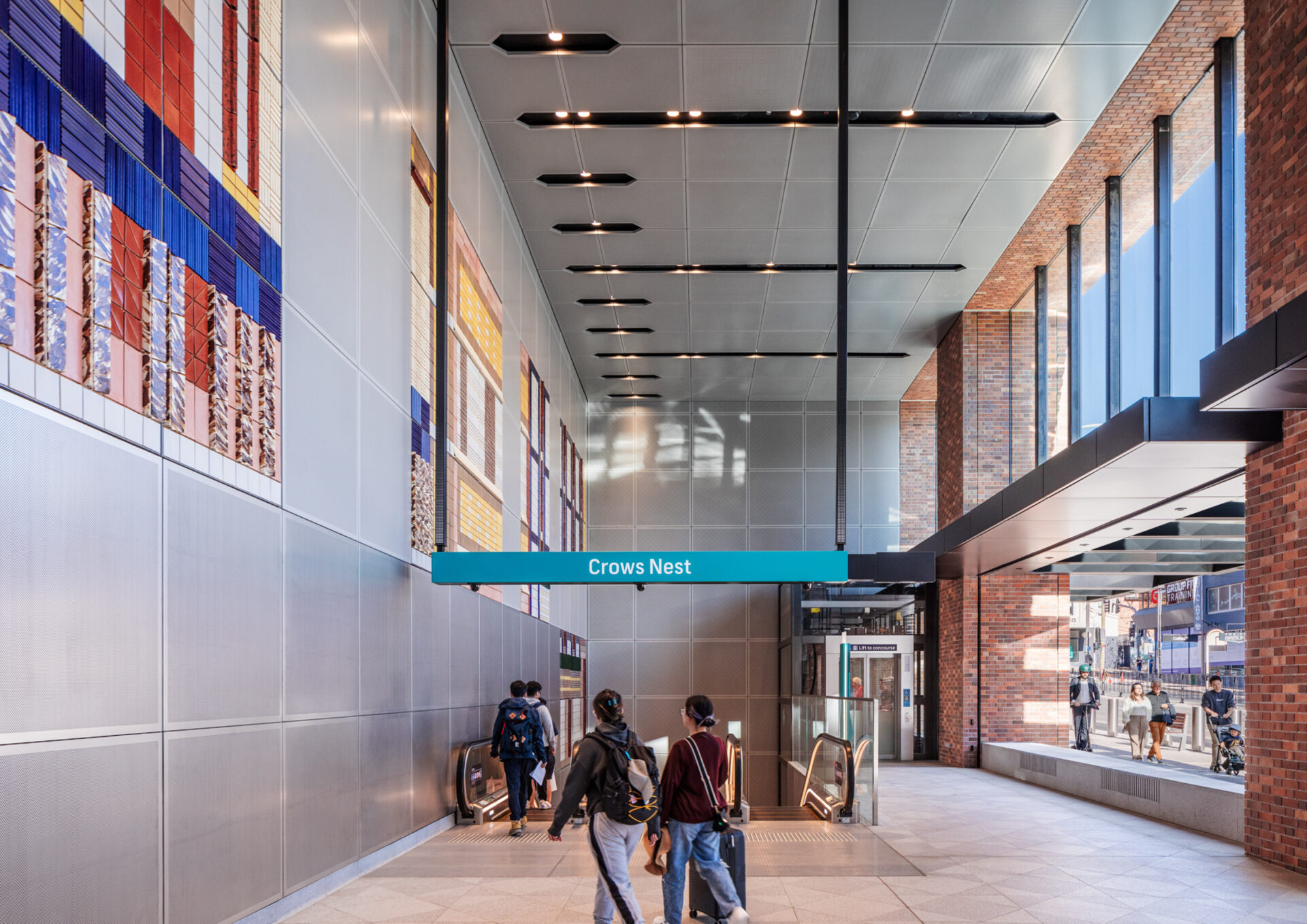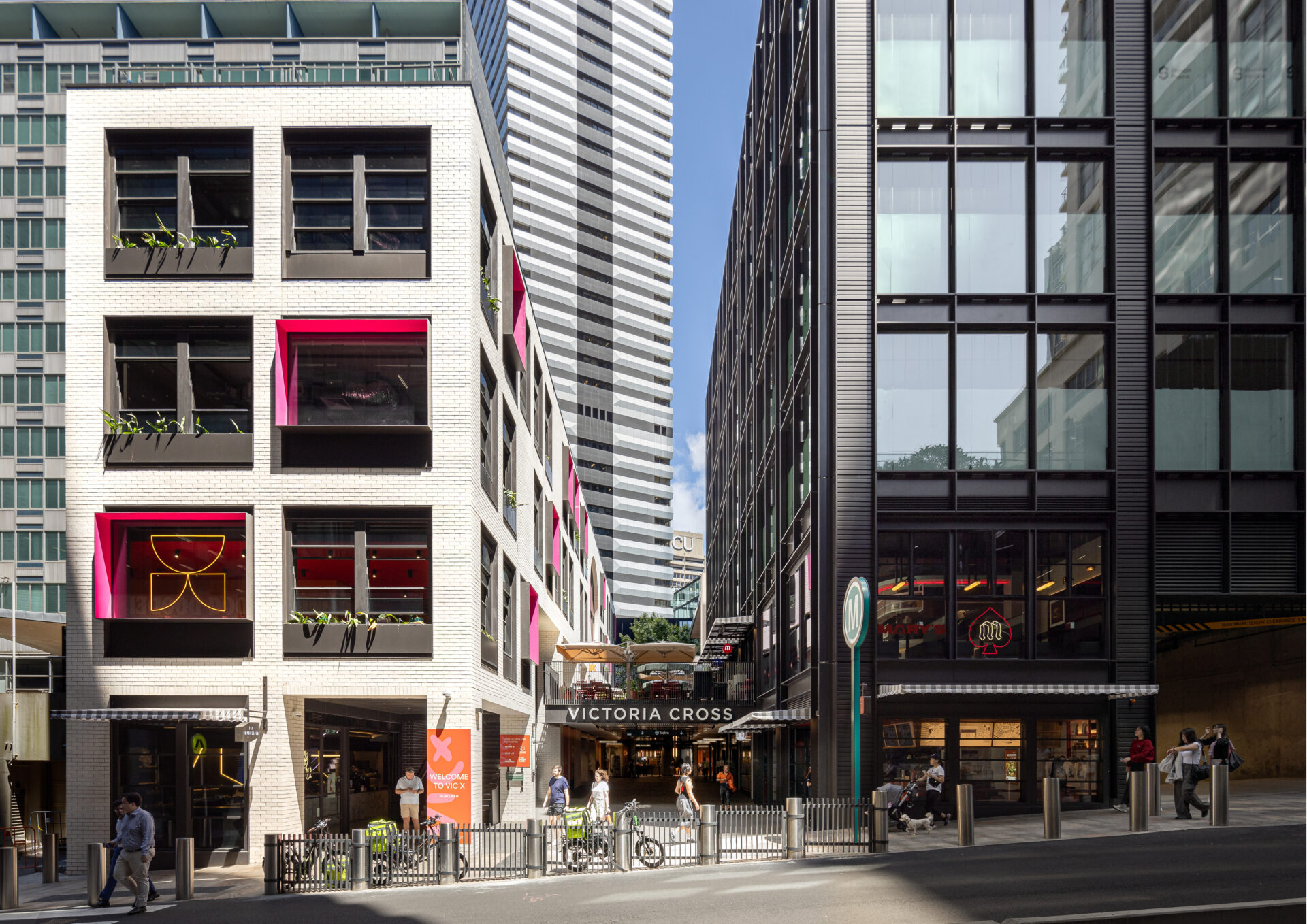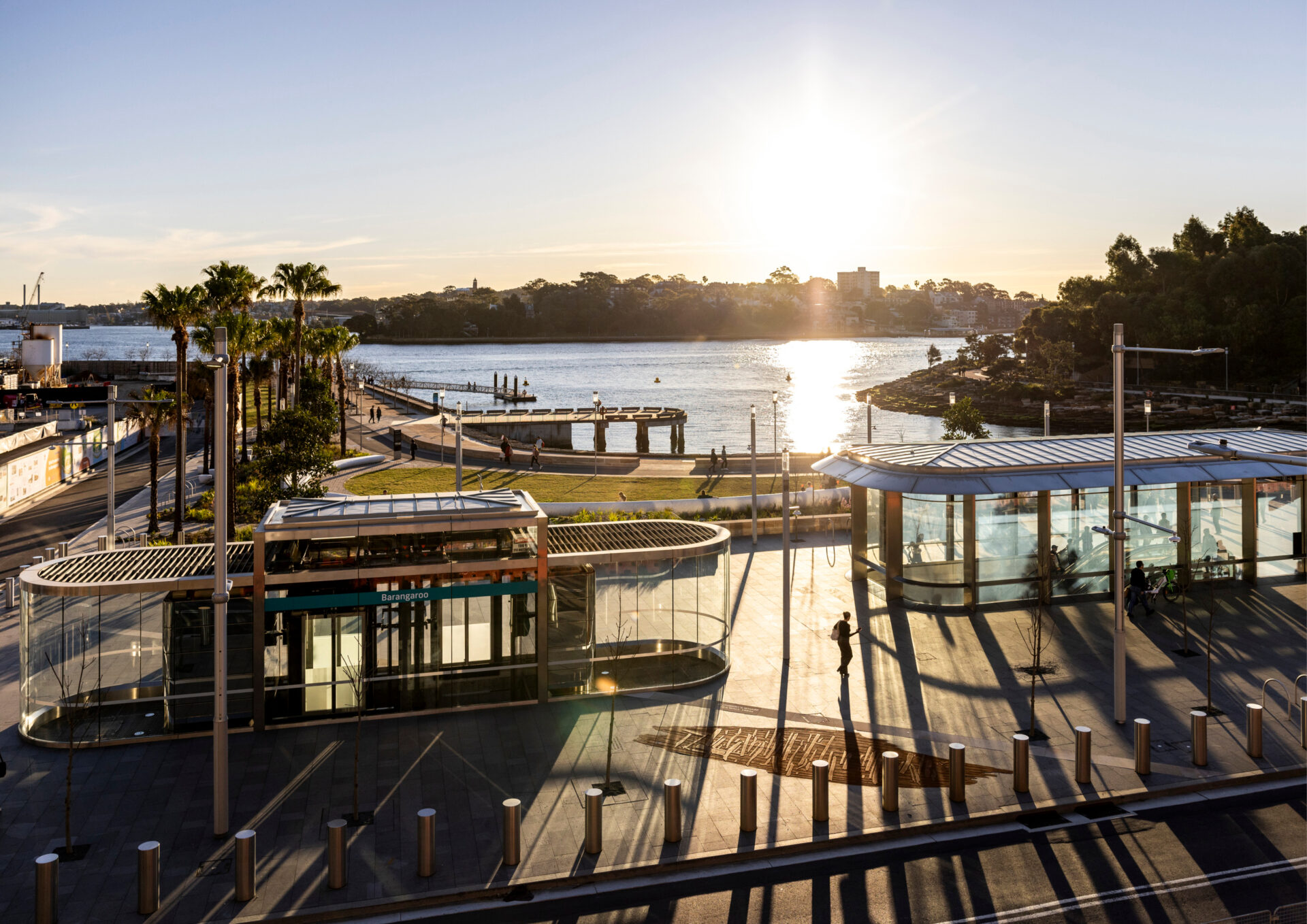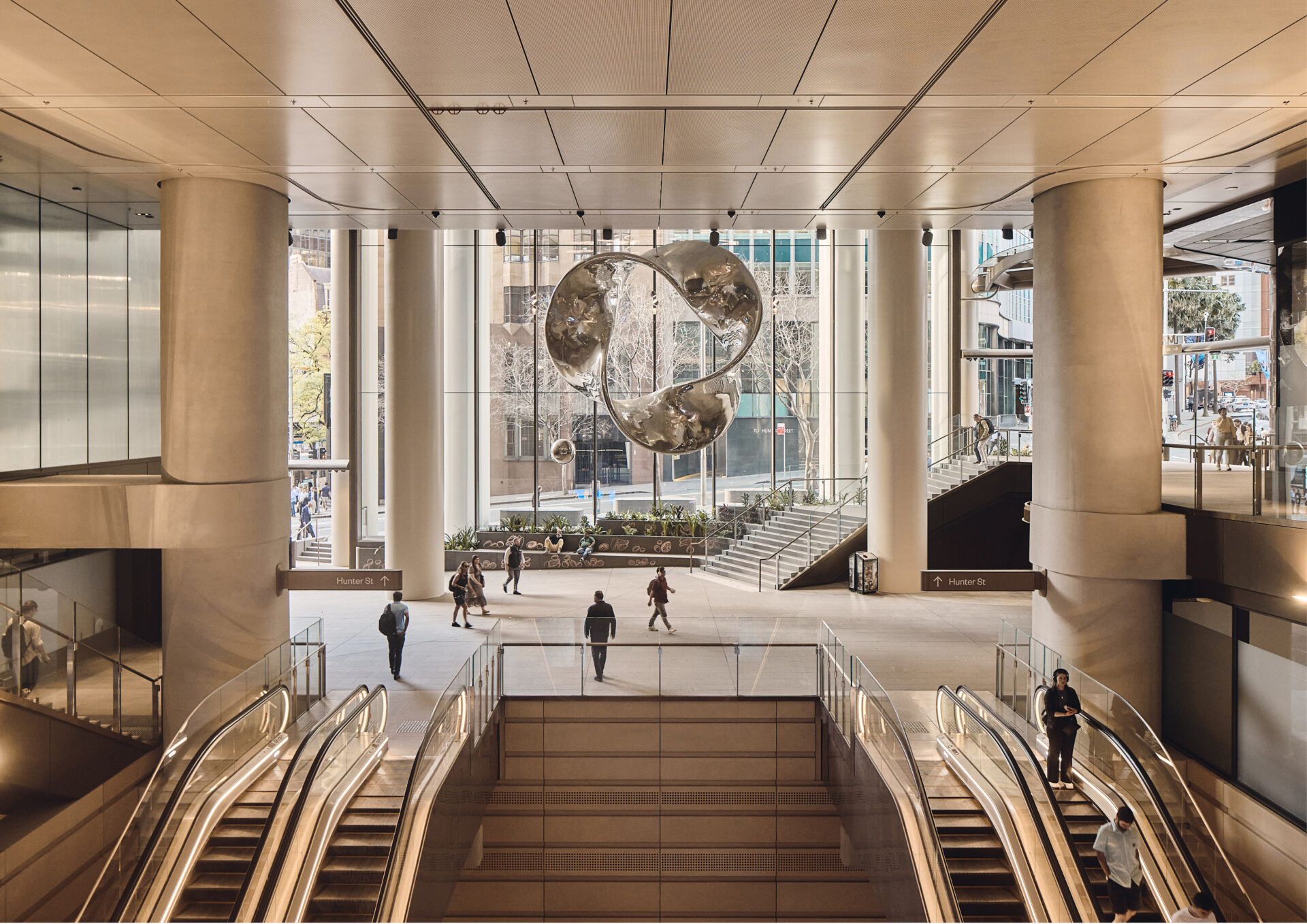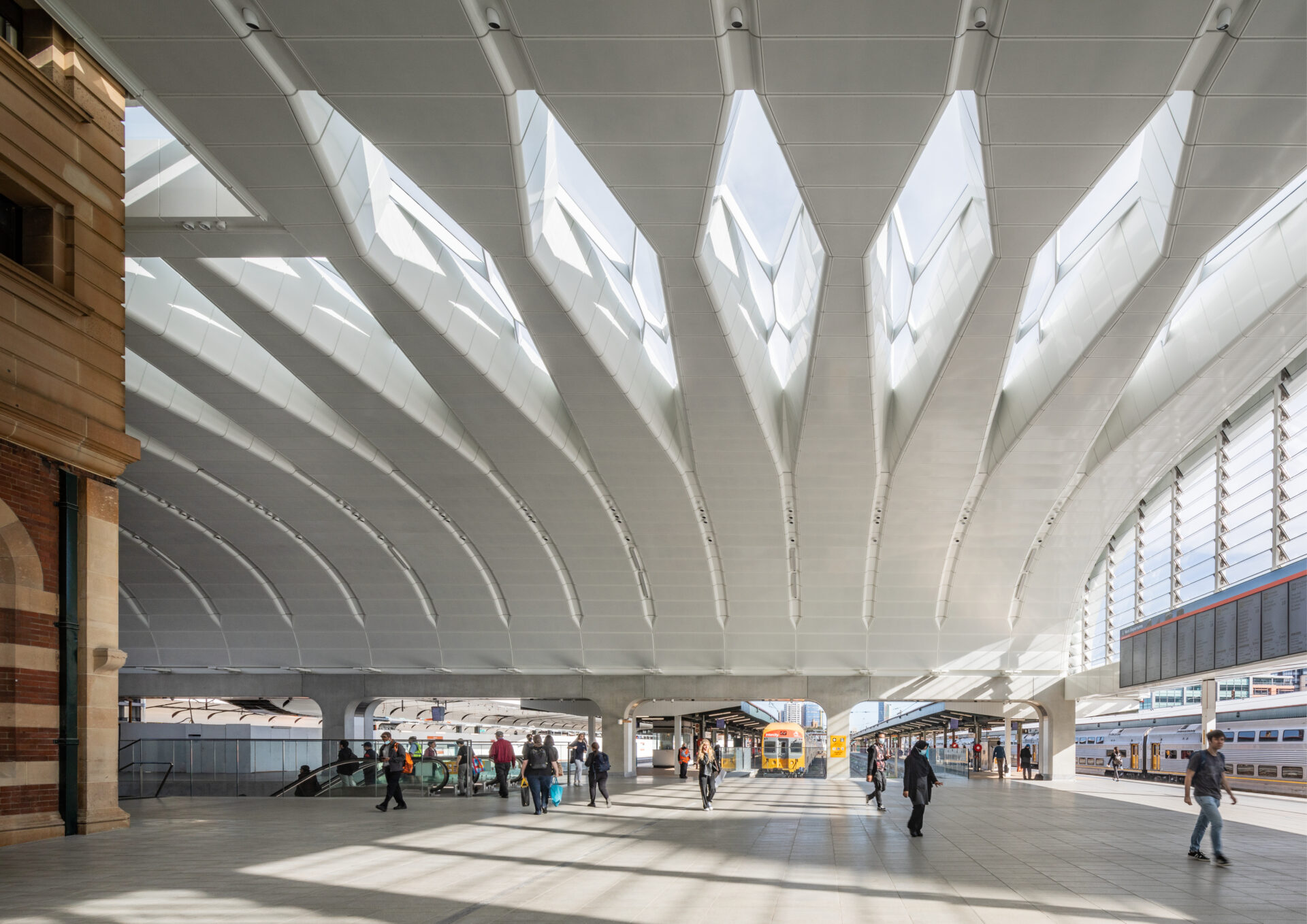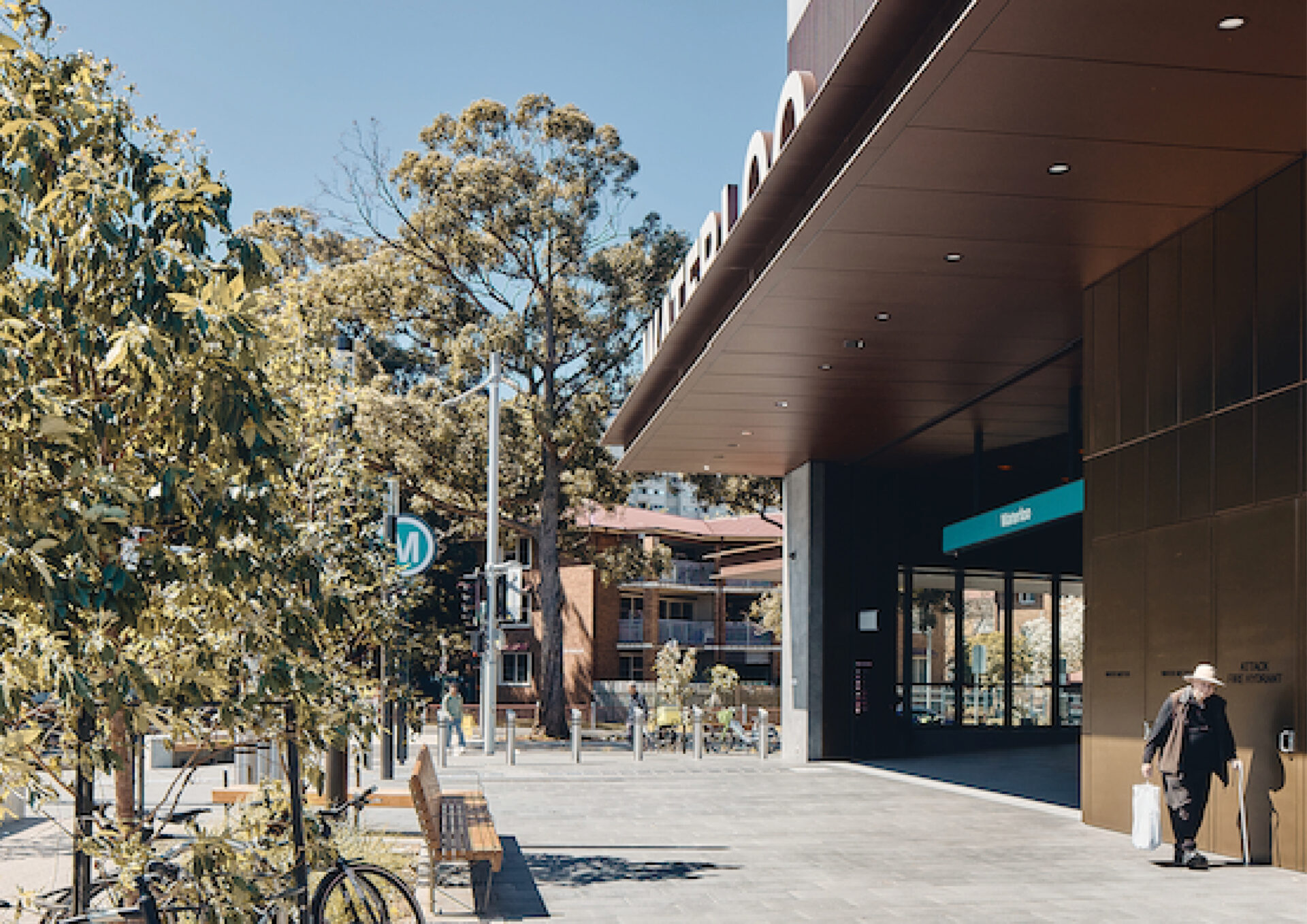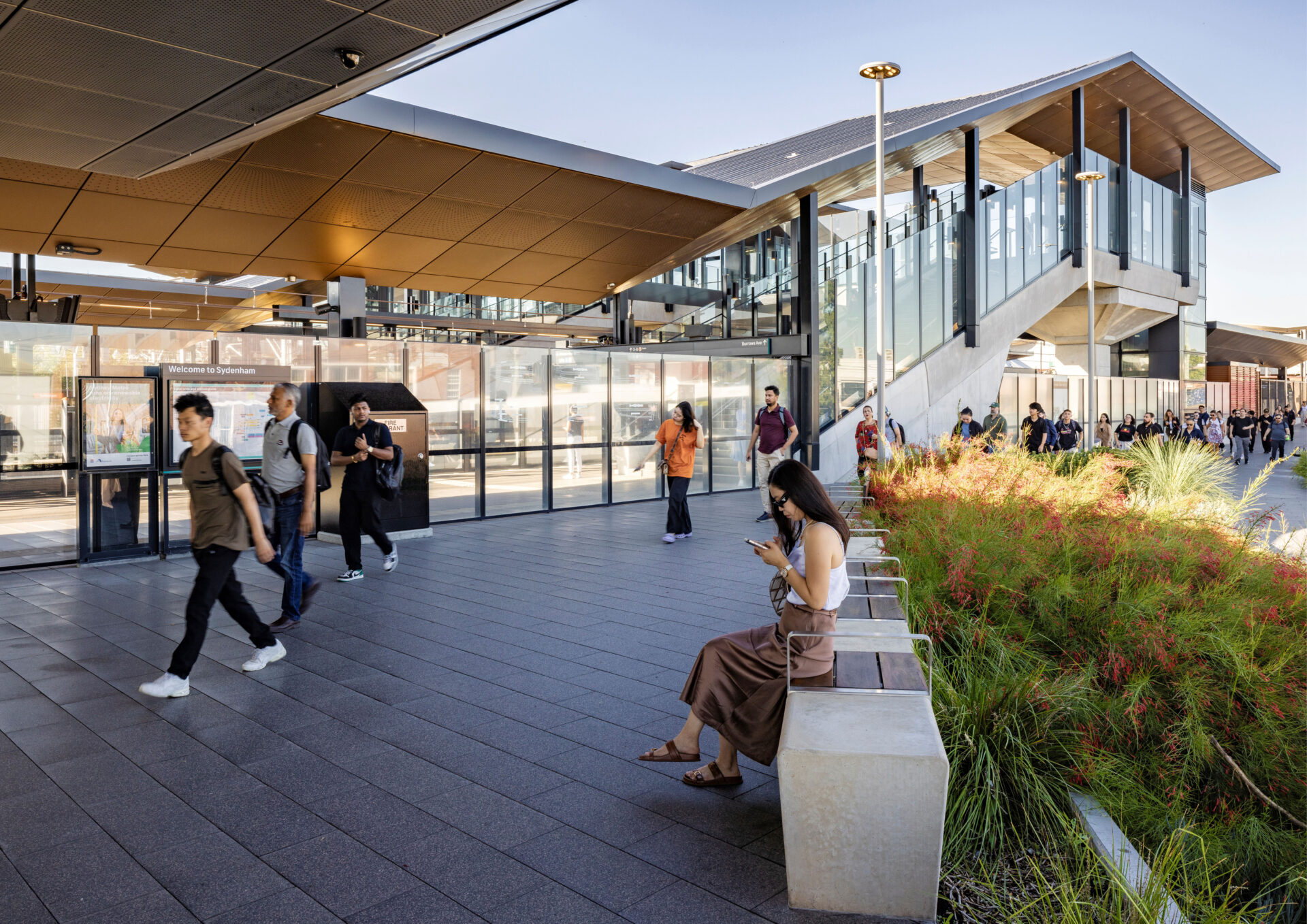Sydney Metro City Stations | Sydney Metro
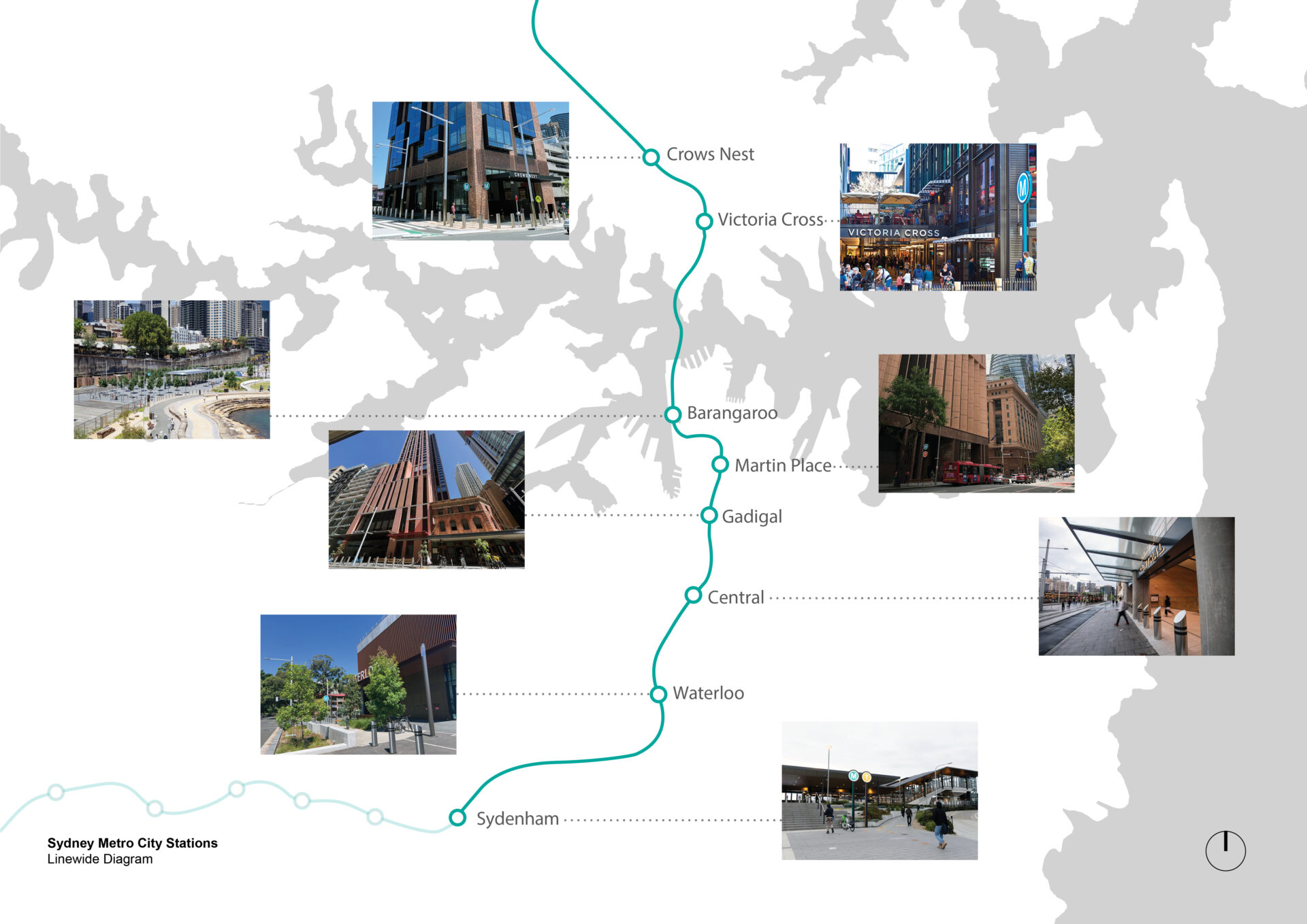
2025 National Architecture Awards Program
Sydney Metro City Stations | Sydney Metro
Traditional Land Owners
Gameragal & Gadigal clan groups
Year
Chapter
NSW
Category
Builder
Photographer
Felix Mooneeram
Peter Bennetts
Sydney Metro
Trevor Mein
Media summary
The new Sydney Metro stations are part of a new metro rail line connecting the north shore to the CBD and Sydney’s inner west.
With six new and two altered stations and a second Sydney Harbour rail crossing, the project provides quality precincts, easy access, and convenient interchange. It provides new ways to move around the city, representing a transformative chapter in Sydney’s history that echoes the impact of the Sydney Harbour Bridge when it opened in 1932.
The Sydney Metro extension and new stations have been universally embraced by the public, with over 28 million trips since opening, and recognised by design professionals as enhancing the everyday life, not only of individuals, but of the city itself. The project exemplifies the outcomes possible when real needs are met, and political will and the requirements of complex stakeholders align through a commitment to world-class architecture, art and urban design.
2025 National Awards Received
2025
NSW Architecture Awards Accolades
The Lloyd Rees Award for Urban Design (NSW)
2025
NSW Architecture Awards
NSW Jury Citation
The Sydney Metro is a transformative, once-in-a-generation project that redefines urban mobility while prioritising the pedestrian experience at every stage of the journey. This ambitious, government-led initiative has reshaped Sydney’s transport landscape, not only enhancing connectivity and mobility but also creating high quality, activated public spaces at each station that are distinctive in character and connected to their individual surrounding environments.
This project is an extraordinary example of the power of collaborative design. Its success has relied on extensive partnerships across multiple disciplines and sectors, both public and private. This project exemplifies the role of strategic urban design stewardship from within government. This work is often invisible, but when done right, sets the project’s path to success. The Sydney Metro team has stewarded this project and enabled the more visible work of each of the architectural teams at the stations to work hard. The pedestrian transition from platform to street level is intuitive, offering a pleasant experience through light-filled spaces, well-designed amenities, and thoughtfully activated adjacent tenancies.
The Sydney Metro is a remarkable addition to ‘Public Sydney,’ highlighting the value of strong urban design-led processes and cross-sector collaboration in delivering the best possible outcomes for the city and its people.
2025
NSW Architecture Awards #2
NSW Jury Citation #2
As a nation, with a few notable exceptions, we are often guilty of being under ambitious when it comes to our built environment. It’s a welcome shift, then, to see the Sydney Metro City Station project set a new benchmark – demonstrating the level of ambition we should expect from public infrastructure, and the magnitude and complexity of integrated design and cross-sector collaboration that can be achieved.
“Legacy project,” “city shaping,” “world class”- these are phrases often used and too often empty rhetoric. In this case, they are well deserved. The project is transformative, not just in transport terms but in how it redefines civic experience in Sydney.
With six new and two upgraded stations linking Chatswood to Sydenham, the expanded Metro network delivers the quality and efficiency seen internationally, but with a distinctly local character – expressed through architecture, materials, and site-specific public artworks. Each station becomes a place in itself: welcoming, accessible, and integrated into its context.
This is infrastructure that supports not just movement, but social and cultural connection as a catalyst for future development and change. It demonstrates the far-reaching impact architects can have on shaping public life and delivering tangible benefit to society and the environment.
Crucially, the project brought together a diverse range of architectural practices working collaboratively under the stewardship of Sydney Metro’s design leadership. It stands as a clear and timely example of what well-led, government-initiated design can accomplish.
It is a worthy and compelling recipient of this year’s NSW Medallion.
Sydney Metro’s new city stations on the M1 Northwest & Bankstown Line has been overwhelmingly positive, with coverage celebrating architecture, unlike any previous Australian public transport project.
The power of public transport is its reach – every demographic has some contact with it. The success of this project is a megaphone for the role of architecture in successful city-making infrastructure. The ease with which people can access and move through stations onto the network is due to successful architectural planning. Multiply that by eight, combine it with world-class art, public domain, and integrated developments, and Sydney has a city-making project without precedent.
Client perspective
Project Practice Team
Elisabeth Peet, Deputy Executive Director Architectural Excellence
Jason Hammond, Director Design
Connie Klonis, Associate Director Design
Bill Luders, Associate Director Design
Andrew Brophy, Associate Director Design
Lee Andrews, Senior Design Manager
Sony Lim, Senior Design Manager
Ned Sando, Design Manager
Ana Diaz, Design Manager
Kate McElhone, Senior Design Manager
Bridget Tregonning, Associate Director Design
Stephen Spacey, Director Design
Kati Westlake, Associate Director Design
Mila Baturevych, Design Manager
Karuna Nainani, Senior Design Manager
Adrian Lindon, Deputy Executive Director Architectural Excellence
Nipun Shahi, Design Manager
Edwin Wilhelm, Design Manager
Lexie Tieman, Senior Design Manager
May Ling Wong, Associate Director Design
Mohsen Alemzadeh, Senior Design Manager
Anita Ng, Design Manager
Vida Mazhari, Senior Design Manager
Nick Sheldrake, Senior Design Manager
Project Consultant and Construction Team
Cox Architecture, Reference Design – Architect
Hassell, Reference Design – Architect
WSP, Reference Design – Engineer
AECOM, Reference Design – Engineer
Fosters + Partners, Stage 1 – Architect
Architectus, Stage 1 – Architect
Arcadia Landscape Architecture, Stage 1 – Landscape Architect
Mott MacDonald, Stage 1 – Engineer
Arcadis, Stage 1 – Engineer
Robert Bird Group, Stage 1 – Engineer
Edwards, Crows Nest Station – Main Contractor
Woods Bagot, Crows Nest Station – Station & OSD Architect
GHD, Crows Nest Station – Station Architect
Oculus, Crows Nest Station – Landscape Architect
Esther Stewart, Crows Nest Station – Artist for Public Art
SMEC, Crows Nest Station – Engineer
Robert Bird Group, Crows Nest Station – Engineer
NDY, Crows Nest Station – Engineer
Surface Design Group, Crows Nest Station – Engineer
Lendlease, Victoria Cross Station – Main Contractor
Bates Smart, Victoria Cross Station – OSD Architect
ASPECT Studio, Victoria Cross Station – Landscape Architect
Lightwell (Michael Thomas Hill & Indigo Hanlee), Victoria Cross Station – Artist for Public Art
Mott MacDonald, Victoria Cross Station – Engineer
Arcadis, Victoria Cross Station – Engineer
BESIX Watpac, Barangaroo Station – Main Contractor
Foster + Partners, Barangaroo Station – Station Design Architect
Architectus, Barangaroo Station – Station Executive Architect
Arcadia Landscape Architecture, Barangaroo Station – Landscape Architect
Khaled Sabsabi, Barangaroo Station – Artist for Public Art
Mott MacDonald, Barangaroo Station – Engineer
Arcadis, Barangaroo Station – Engineer
Lendlease, Martin Place Station – Main Contractor
Grimshaw, Martin Place Station – Station Architect
JPW, Martin Place Station – OSD North Architect
Tzannes Architect, Martin Place Station – OSD South Architect
Elke Haege, Martin Place Station – Landscape Architect
ASPECT Studio, Martin Place Station – Landscape Architect
Mikala Dwyer, Martin Place Station – Artist for Public Art
Claire Healey & Sean Cordeiro, Martin Place Station – Artist for Public Art
Tina Havelock Stevens, Martin Place Station – Artist for Public Art
Debra Beale, Martin Place Station – Artist for Public Art
Stevie Fieldsend, Martin Place Station – Artist for Public Art
Tom Bass, Martin Place Station – Artists reclaimed artwork
Douglas Annand (reimagined by Stevie Fieldsend), Martin Place Station – Artists reclaimed artwork
Arup, Martin Place Station – Engineer
CPB, Gadigal Station – Main Contractor
Foster + Partners, Gadigal Station – Station and OSD North Design Architect
Cox Architecture, Gadigal Station – Station and OSD North Executive Architect
Bates Smart, Gadigal Station – OSD South Architect
TTW, Gadigal Station – Engineer
Sue Barnsley Design, Gadigal Station – Landscape Architect
Callum Morton, Gadigal Station – Artist for station Public Art
Tomas Saraceno, Gadigal Station – Artist for OSD North Public Art
Aurecon, Gadigal Station – Engineer
Laing O’Rourke, Central Station – Main Contractor
Woods Bagot, Central Station – Station Architect
John McAslan and Partners, Central Station – Station Architect
GHD, Central Station – Station Architect
Rose Nolan, Central Station – Artist for concourse Public Art
Bronwyn Bancroft, Central Station – Artist for services building Public Art
GHD, Central Station – Engineer
Aurecon, Central Station – Engineer
John Holland, Waterloo Station – Main Contractor
Mirvac, Waterloo Station – Main Contractor
John McAslan and Partners, Waterloo – Architect
ASPECT Studio, Waterloo Station – Landscape Architect
Nicole Monks, Waterloo Station – Artist for Public Art
WSP, Waterloo Station – Engineer
Robert Bird Group, Waterloo Station – Engineer
John Holland, Sydenham Station – Main Contractor
Laing O’Rourke, Sydenham Station – Main Contractor
Hassell, Sydenham Station – Architect & Landscape Architect
Weston Williamson, Sydenham Station – Architect
Agatha Gothe Snape, Sydenham Station – Artist for Public Art
Aurecon, Sydenham Station – Engineer
Cox Architecture, Victoria Cross Station – Station Design Architect
Atelier Luke, Barangaroo Station – Architect for Services Pods
Plummer and Smith, Barangaroo Station – Landscape Architect for Services Pods
GHD, Sydenham Station – Engineer

